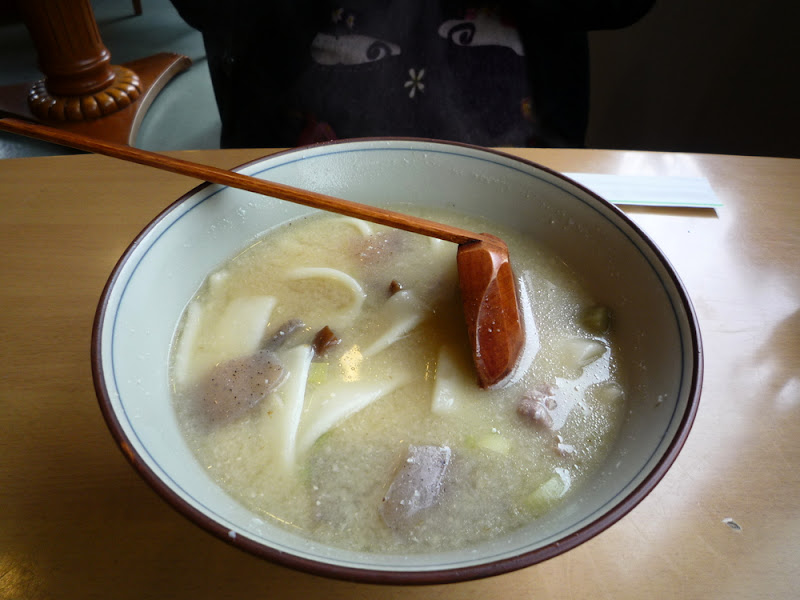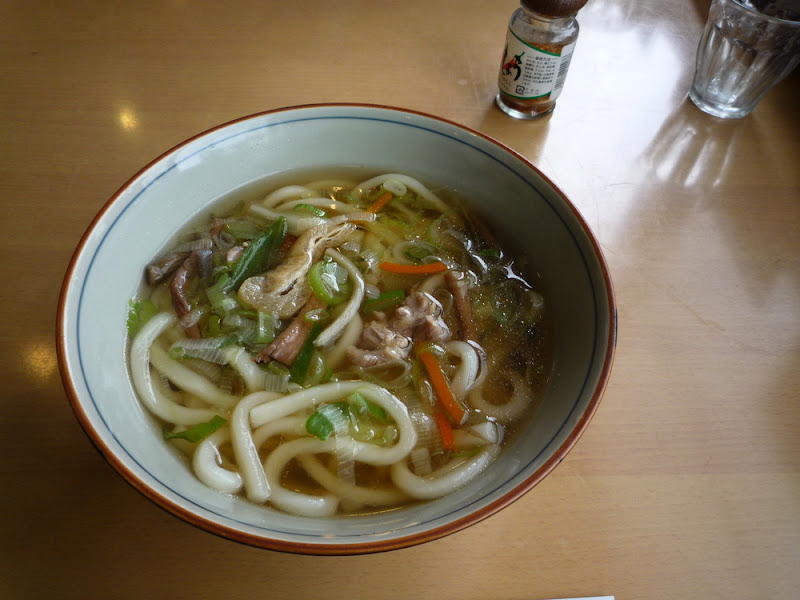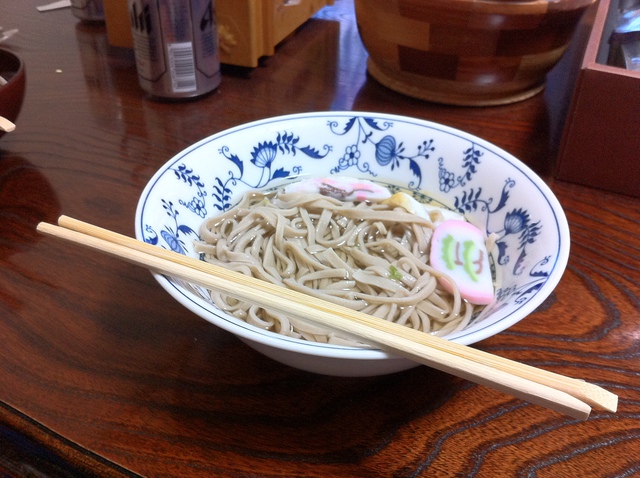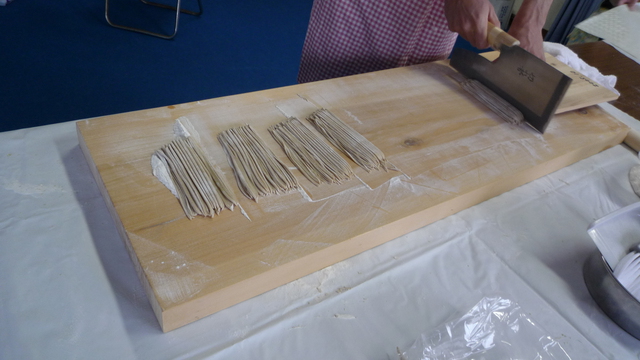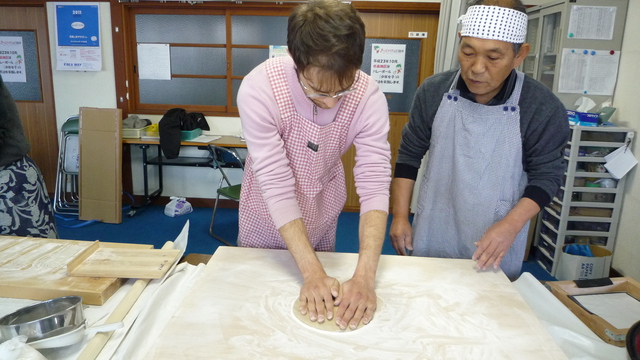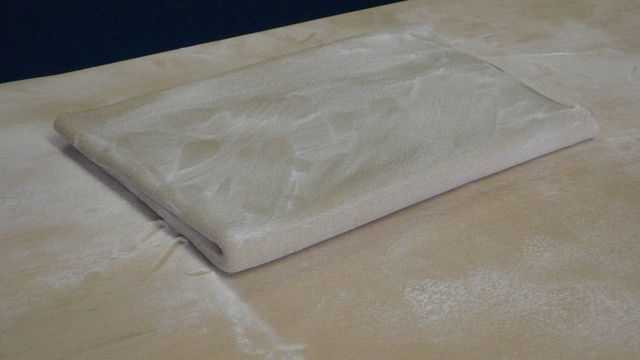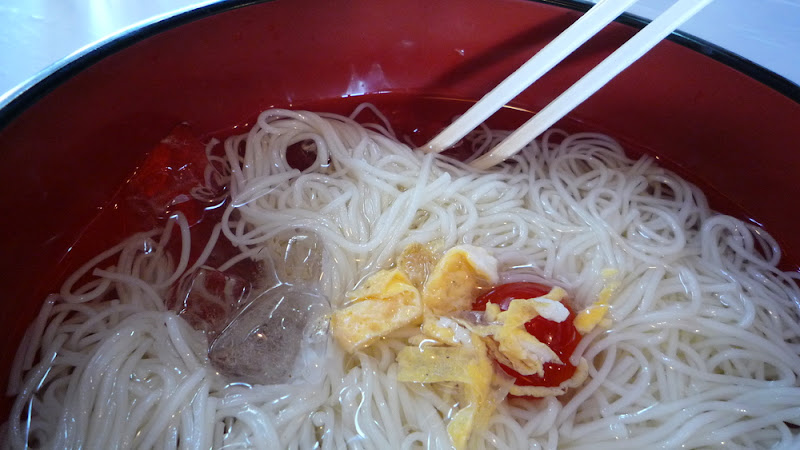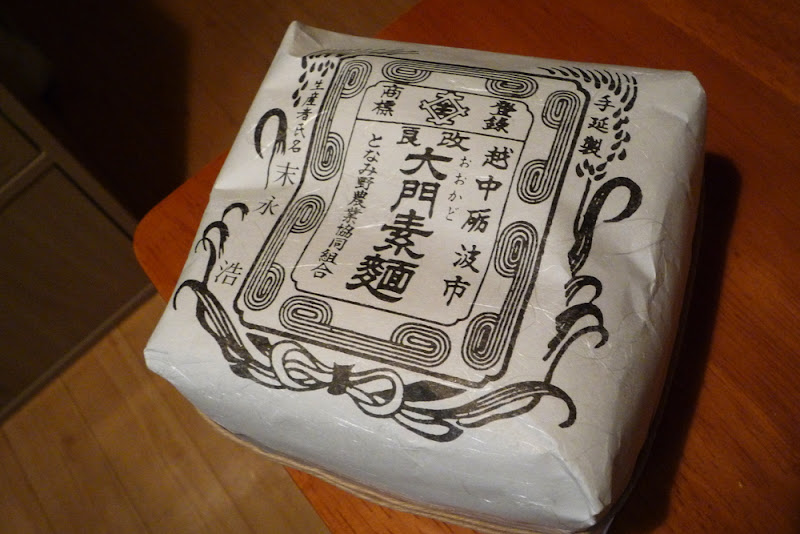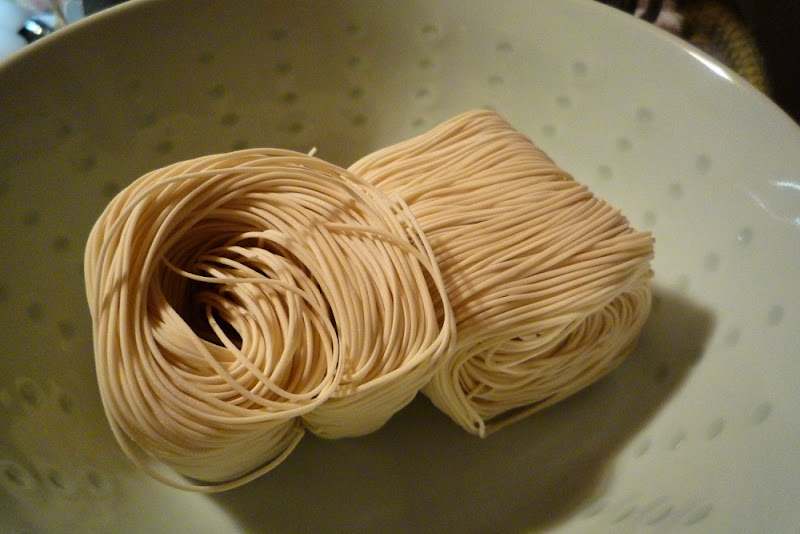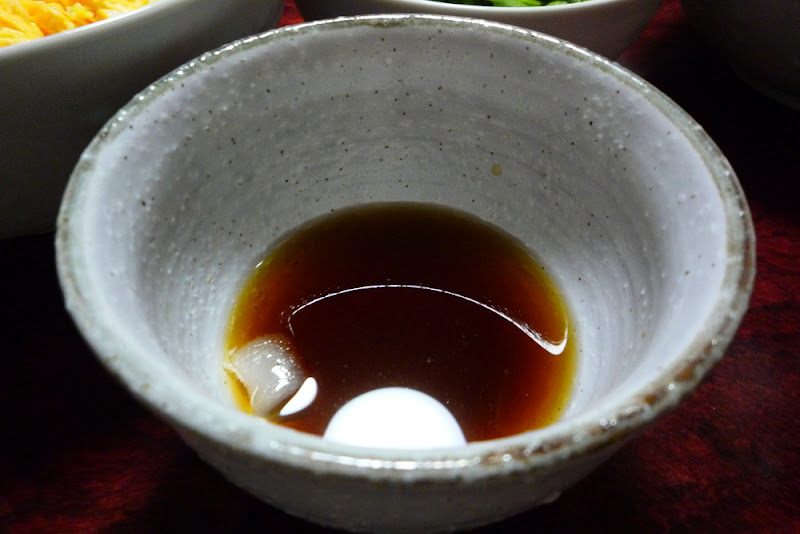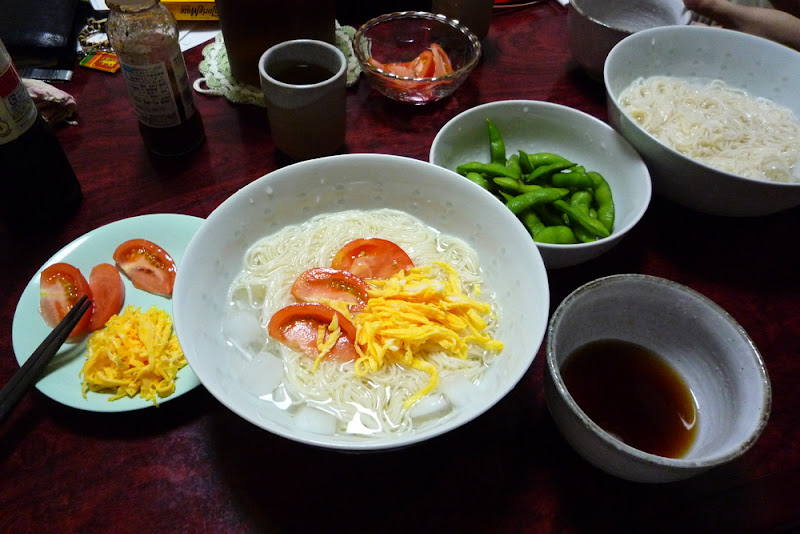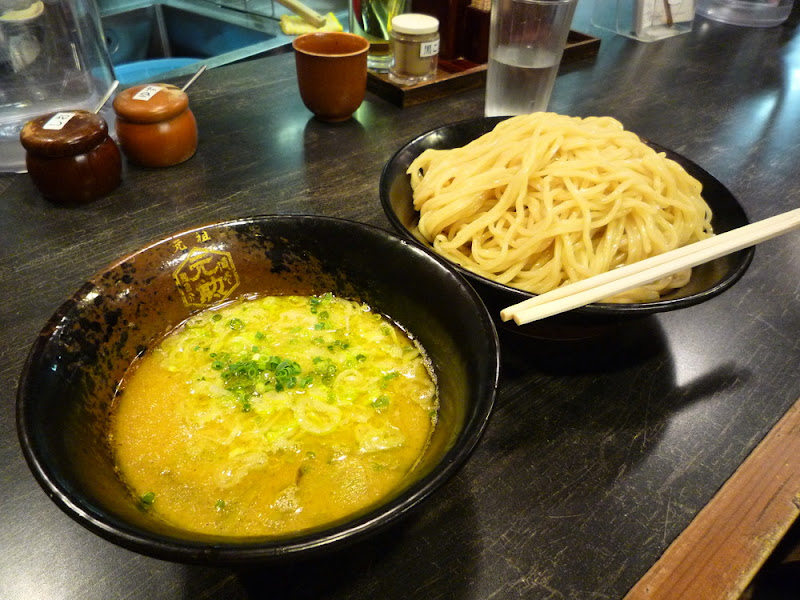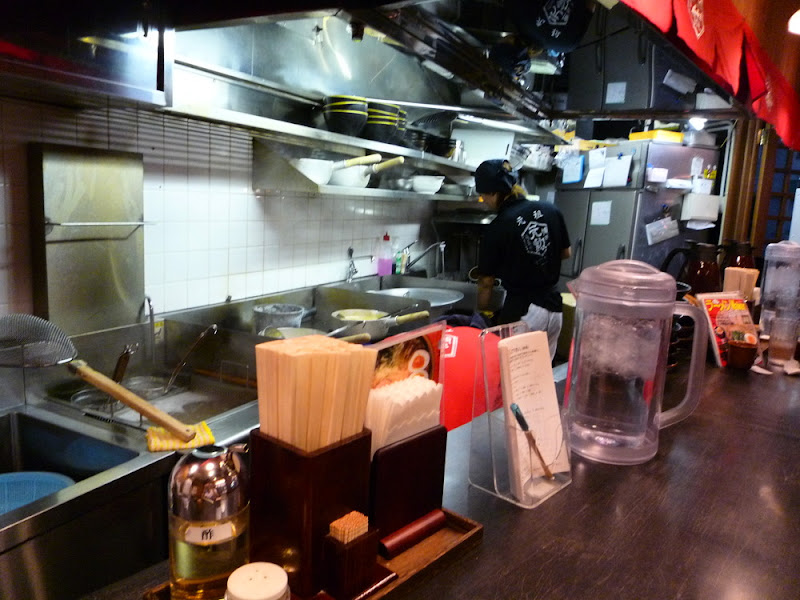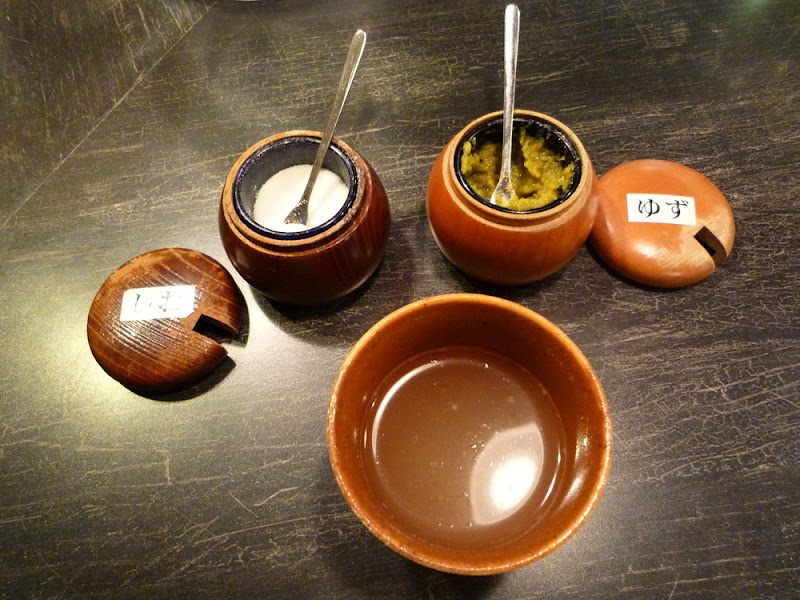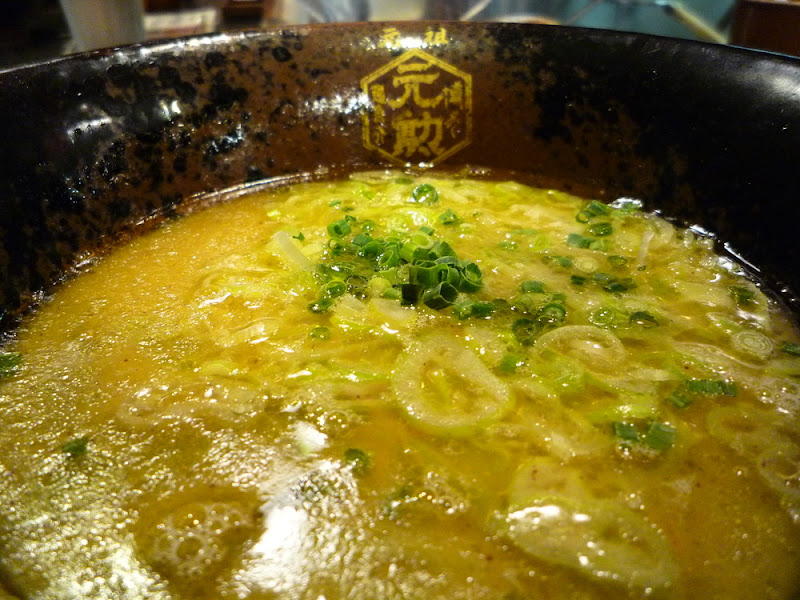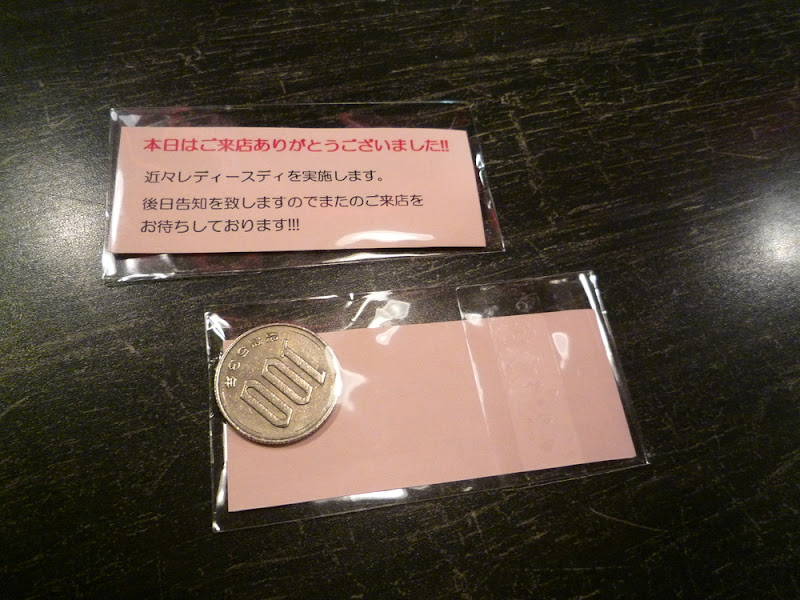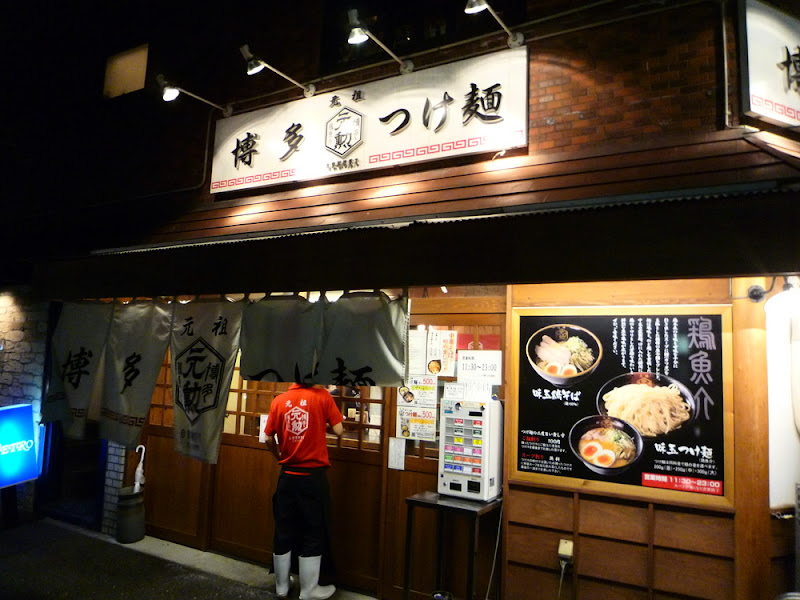
El otro día cenamos en uno de tantos buenos restaurantes de ramen que hay en Tenjin: Taihō Ramen.
この間天神にある美味しいラーメンのお店の一つで夜食べた:久留米 大砲ラーメン。
The other day we had supper at one of the many good ramen restaurants in Tenjin: Taihou Ramen.
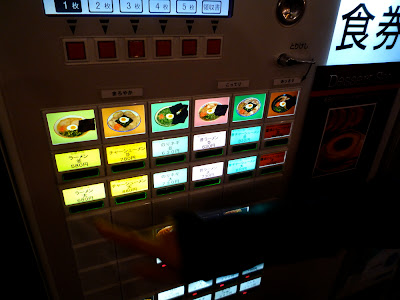
Lo primero que hay que hacer nada más entrar es comprar los tickets de lo que quieras comer, que se venden en una máquina expendedora en la que los botones tienen fotos. Yo me pedí el ramen con alga nori y puerro (o cebolleta), y un suplemento de arroz y gyōza. Total: 830 yenes.
入ったら自動販売機ですぐ食券を買うことだ。僕はのりネギラーメンにして、プラス200円でご飯と餃子を付けてもらった。合計830円。
First thing you do once you’re in is getting your food tickets from the vending machine. I got ramen with nori seaweed and Welsh onion, with a rice and gyoza supplement – everything for 830 yen.
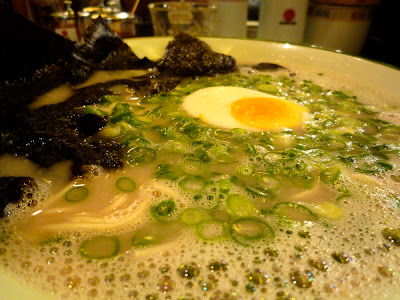
El ramen de Taihō Ramen es del estilo Kurume, que muchos citan como el origen del famoso ramen tonkotsu (caldo de cerdo), que engloba a la gran mayoría del ramen que se come en la isla de Kyushu.
大砲ラーメンは元祖豚骨とよく言われる久留米ラーメンだ。豚骨ラーメンにはいろんな種類があって九州では他のラーメンを食べるのは珍しい。
Taihou Ramen‘s ramen is Kurume style, which is often cited as the roots of all tonkotsu ramen. Tonkotsu or pork soup ramen is a superset of almost every ramen variety in the Kyushu Island.
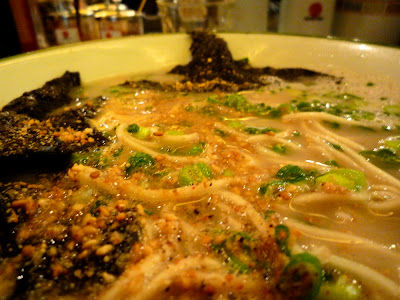
Después de ponerle sésamo y otros condimentos y comer un poco, tiene esta pinta.
ごま等を付けて、半分食べてから、見た目はこの感じになってくる。
After putting sesame and stuff in the ramen, and having half of it, it looks like this.
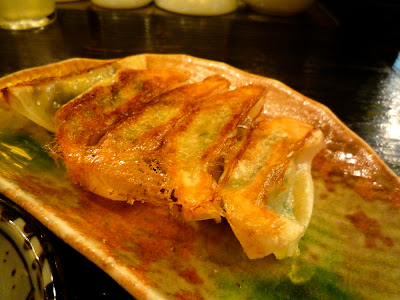
Estos son los gyōza, una especie de empanadillas chinas que se suelen hervir o hacer al vapor, pero que en Japón y sobre todo en esta zona es muy típico comerlas a la plancha.
これは焼き餃子。焼くのは日本だけかな?とにかく美味しい。福岡では焼き餃子がかなり有名。
These are gyoza, Chinese dumplings that are usually steamed or boiled, but we like to fry them on a pan here in Japan.
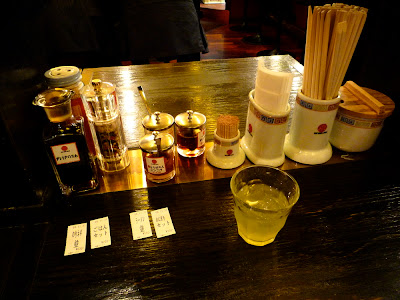
Todo esto es para ponértelo a tu gusto en el ramen y para mojar los gyōza. Un día os haré un cursillo.
初めて来る場合は、付けれる物が多くて難しいかもしれない。幸いなれて来た。
All this stuff is to add a personal flavor to your ramen and gyoza. Maybe I should explain how to use everything some day.

Y este es el restaurante visto desde fuera. Ojo que el «taihō» de Taihō Ramen significa «cañón».
これはお店の外見。大砲ラーメンという名前の由来は何だろう?
And this is the restaurant’s outside. Note the «taihou» in Taihou Ramen means «cannon».
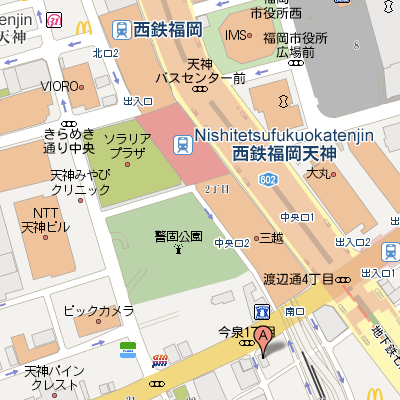
Aquí tenéis el mapa para no perderos. Como podéis ver, está a dos minutos de la zona donde paseamos ayer.
そしてこれは迷子にならないような地図だ。ご覧の通り、昨日の散歩の場所から歩いて2分で行ける。
Here’s a map so you don’t get lost. As you see, it’s just 2 minutes from the place we walked around yesterday.


